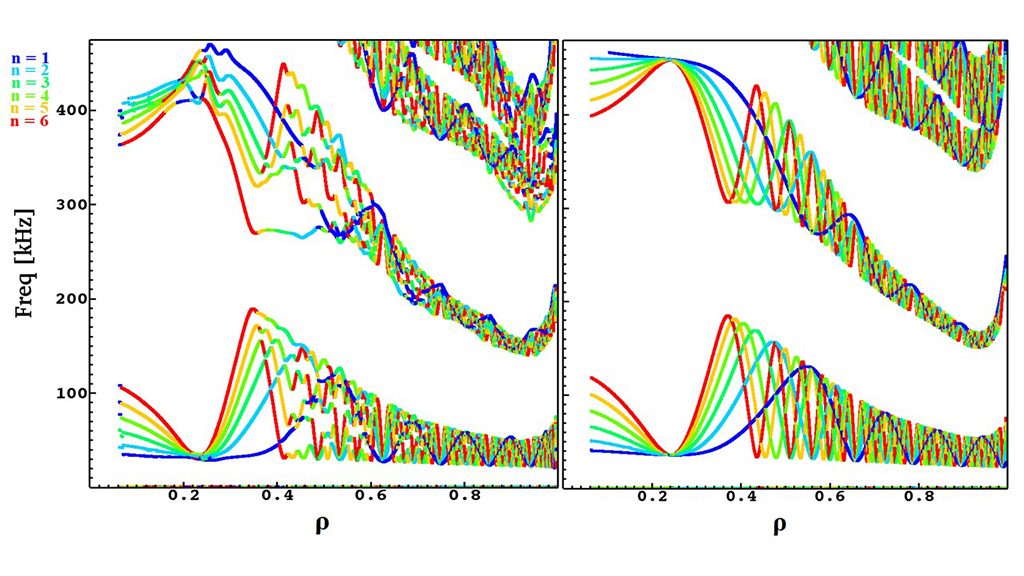Shear Alfvén instabilities are of considerable interest in fusion plasma research. These instabilities can be driven by energetic particles such as fusion products. Not only can the Alfvén instabilities degrade the confinement and heating efficiency of energetic particles by channeling them but they can also cause severe damage to the plasma-facing components of the plasma confining vessel through high heat fluxes. Thus, investigations of their control, better performance and comprehensive understanding are required.
We have carried out detailed modelling and analysis of experimentally observed energetic particledriven Alfvénic instabilities in tokamak and stellarator plasmas using three dimensional (3D) numerical tools based on the reduced magnetohydrodynamics (MHD) model.
To explain experimental observations of Alfvén instabilities in TJ-II flexible heliac plasmas, we have compared experimental results with the results obtained through theoretical model of shear Alfvén waves in a 3D toroidal geometry and obtained qualitative agreement.
We have also modelled bifurcated MHD equilibria with 3D helical core surrounded by an axisymmetric 2D mantle for the ASDEX Upgrade tokamak plasmas and compared them to an axisymmetrical 2D case (cf. figure). Our modelling results reveal interesting new physics effects due to 3D helical core such as continuum splitting and variation of mode frequency around the frequency accumulation point as well as new frequency gaps due to helical distortion.
Reference
